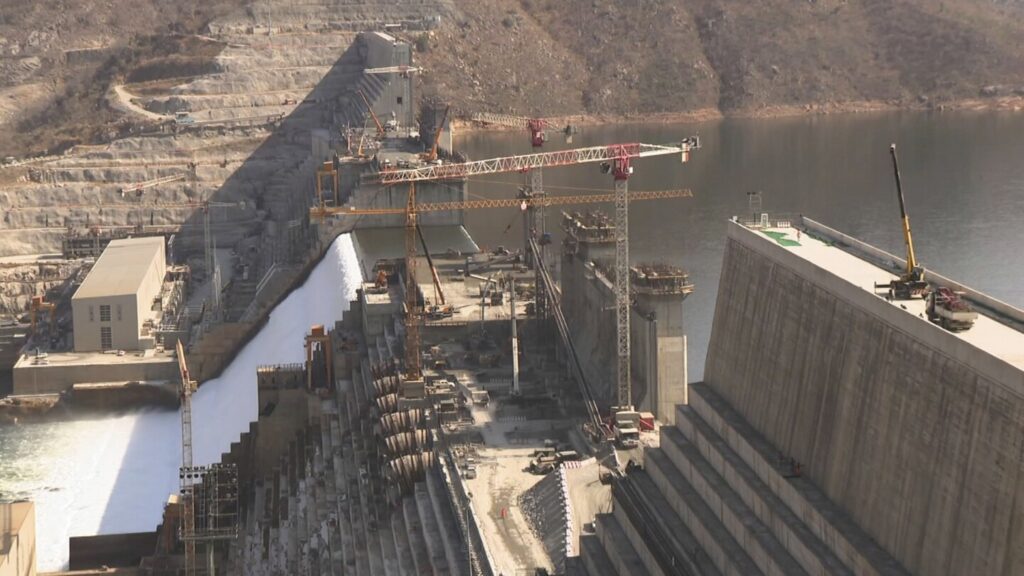
ADDIS ABABA, Ethiopia — Ethiopia has announced the completion of the Grand Ethiopian Renaissance Dam (GERD), a significant development in its quest to boost electricity production. The announcement, made by Prime Minister Abiy Ahmed, marks a pivotal moment for Ethiopia, which has been embroiled in a long-standing dispute with Egypt over the equitable distribution of Nile waters.
Egypt has consistently opposed the dam, fearing it will drastically reduce its share of the Nile River waters, which are vital for the country’s agriculture and sustenance of over 100 million people. The dam has been labeled an existential threat by Egypt, underscoring the critical importance of the Nile to the nation.
Historical Disputes and Diplomatic Efforts
The completion of the dam follows years of fraught negotiations between Ethiopia and Egypt, which have yet to yield a comprehensive agreement. Central to these discussions is the concern over water flow management during drought conditions, a point of contention that remains unresolved.
Prime Minister Abiy Ahmed, addressing Ethiopian lawmakers, emphasized the country’s commitment to a peaceful resolution and mutual prosperity. “While there are those who believe it should be disrupted before that moment, we reaffirm our commitment: the dam will be inaugurated,” he declared. He further assured that Ethiopia’s development ambitions do not intend to undermine the welfare of its Egyptian and Sudanese neighbors.
“We believe in shared progress, shared energy, and shared water. Prosperity for one should mean prosperity for all,” Abiy stated.
The Strategic Importance of GERD
Initiated in 2011, the $4 billion GERD project is Africa’s largest dam and a cornerstone of Ethiopia’s economic strategy. It aims to generate over 6,000 megawatts of electricity, effectively doubling Ethiopia’s current energy output and positioning the country as a potential energy exporter in the region.
The dam’s strategic location on the Blue Nile, near the Sudanese border, further complicates geopolitical dynamics. Despite tensions, Ethiopia has garnered support from upstream nations, including Uganda, which are part of the Nile Basin Initiative—a regional partnership advocating for equitable water resource use. The initiative’s accord, effective since October, remains unratified by Egypt and Sudan.
Technical and Environmental Considerations
Located approximately 500 kilometers northwest of Addis Ababa, the dam measures 1,800 meters in length and 175 meters in height. It is supported by a reservoir capable of holding up to 74 billion cubic meters of water, according to the main contractor.
Ethiopia argues that the dam is essential for alleviating poverty and fostering economic growth. However, the project has raised environmental and social concerns, including potential impacts on downstream water availability and local ecosystems.
Regional Implications and Future Prospects
The completion of GERD has significant implications for regional stability and cooperation. While Ethiopia views the dam as a development milestone, Egypt’s apprehensions persist, rooted in historical agreements dating back to colonial times. The 1929 accord, brokered by the United Kingdom, allocated the majority of Nile waters to Egypt and Sudan, excluding other riparian nations.
The path forward involves navigating complex geopolitical landscapes and addressing environmental sustainability. Experts suggest that a cooperative framework, balancing developmental needs with ecological preservation, is crucial for long-term regional harmony.
According to a regional expert, “The success of GERD hinges on diplomatic engagement and shared resource management. It’s a test of regional cooperation and sustainable development.”
As Ethiopia prepares for the dam’s official inauguration, the international community watches closely, anticipating the potential for renewed negotiations and collaborative solutions.







